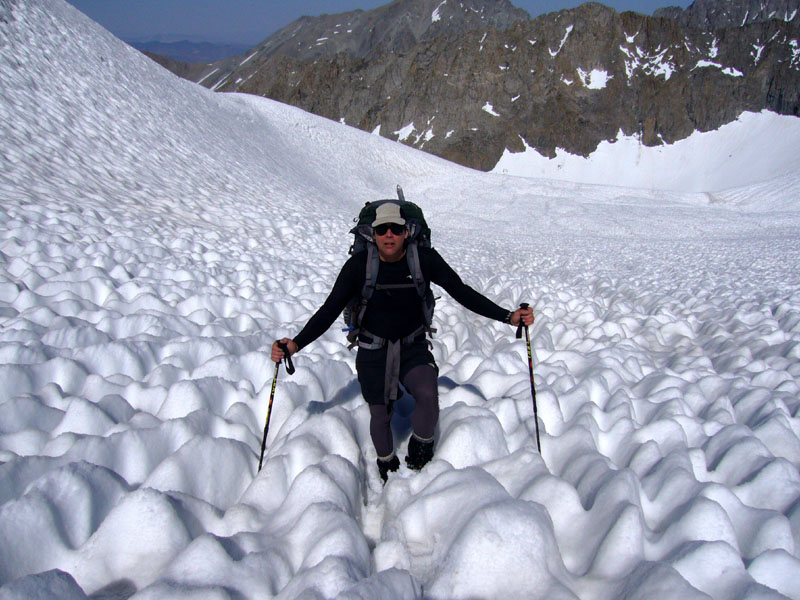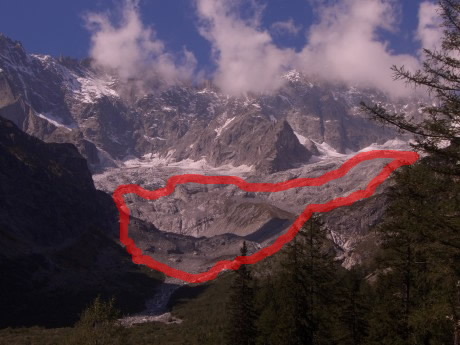Suncups
These are small depressions on the surface of the snow (or firn) created when the sun melts the snow and subsequently the snow evaporates.
Piedmont Glaciers
These occur when steep valley glaciers flow onto flat plains, spreading out into a fan or bulb shape (lobes). An example of this is the Malaspina Glacier in Alaska, which is the largest piedmont glacier in the world due to having a width of forty miles. Upon leaving the mountain valleys it covers five thousand square kilometres of coastal plain.
These are formed by glaciers that increasingly deepen sections of the valley floor (often when the glacier is extending or compressing). This means that when the glacier retreats the deepened areas become filled with meltwater thus developing into lakes. These remain thousands of years after the glacier has totally melted away with subsequent streams and precipitation keeping them filled with water. An example of a ribbon lake is that of Llyn Peris (North Wales), with ‘Llyn’ being the welsh word for ‘lake’. The Lake District is a key example of how these lakes characterise an area.
Diagram of the various aspects of a ribbon lake
Llyn Peris
Barren Zone
This is the bare rock and ground that is uncovered around the margins of a glacier when it is retreating. These areas will often be smooth with no soil or vegetation covering, although may contain fresh moraine.
Barren zone at the snout of a glacier




No comments:
Post a Comment